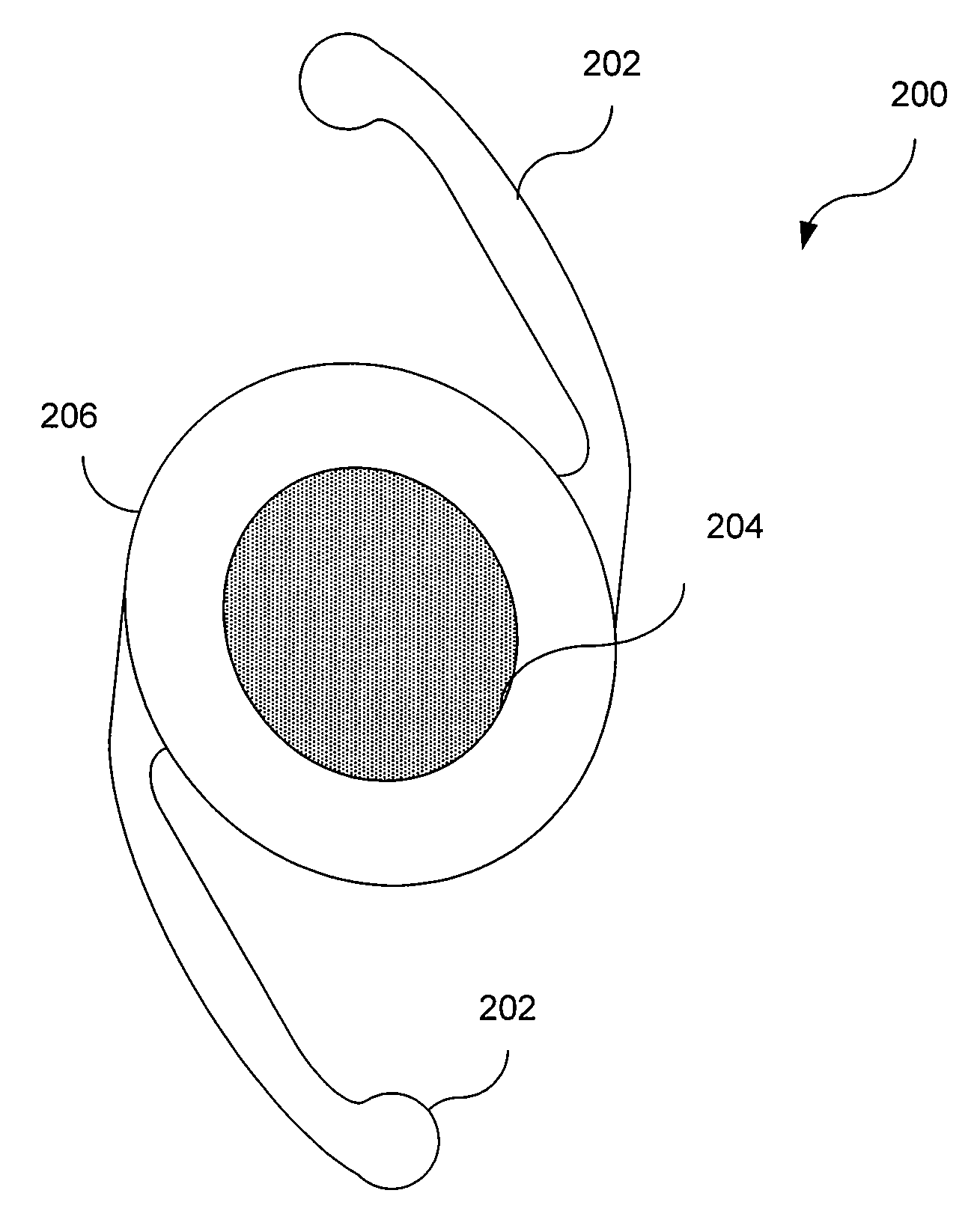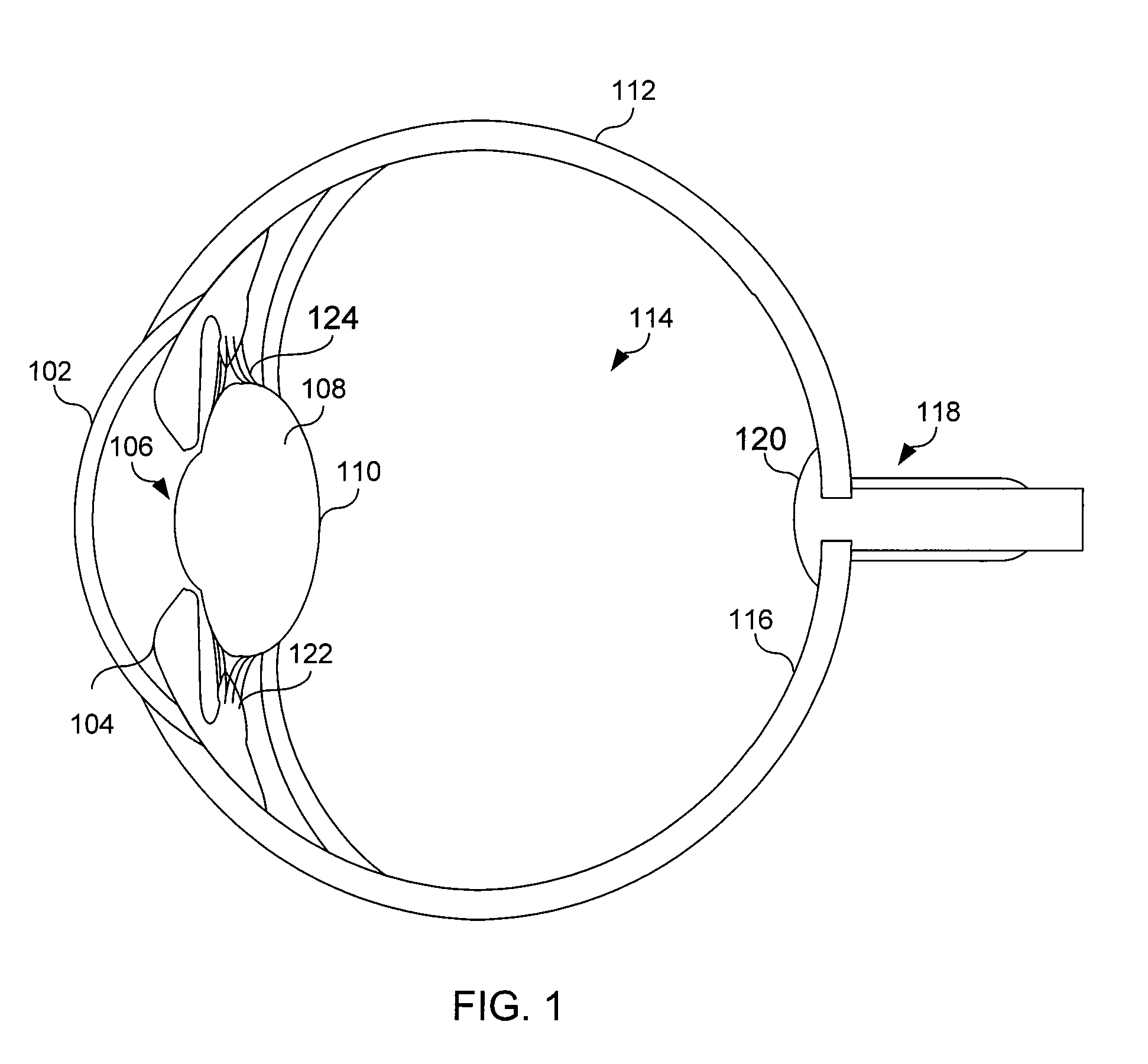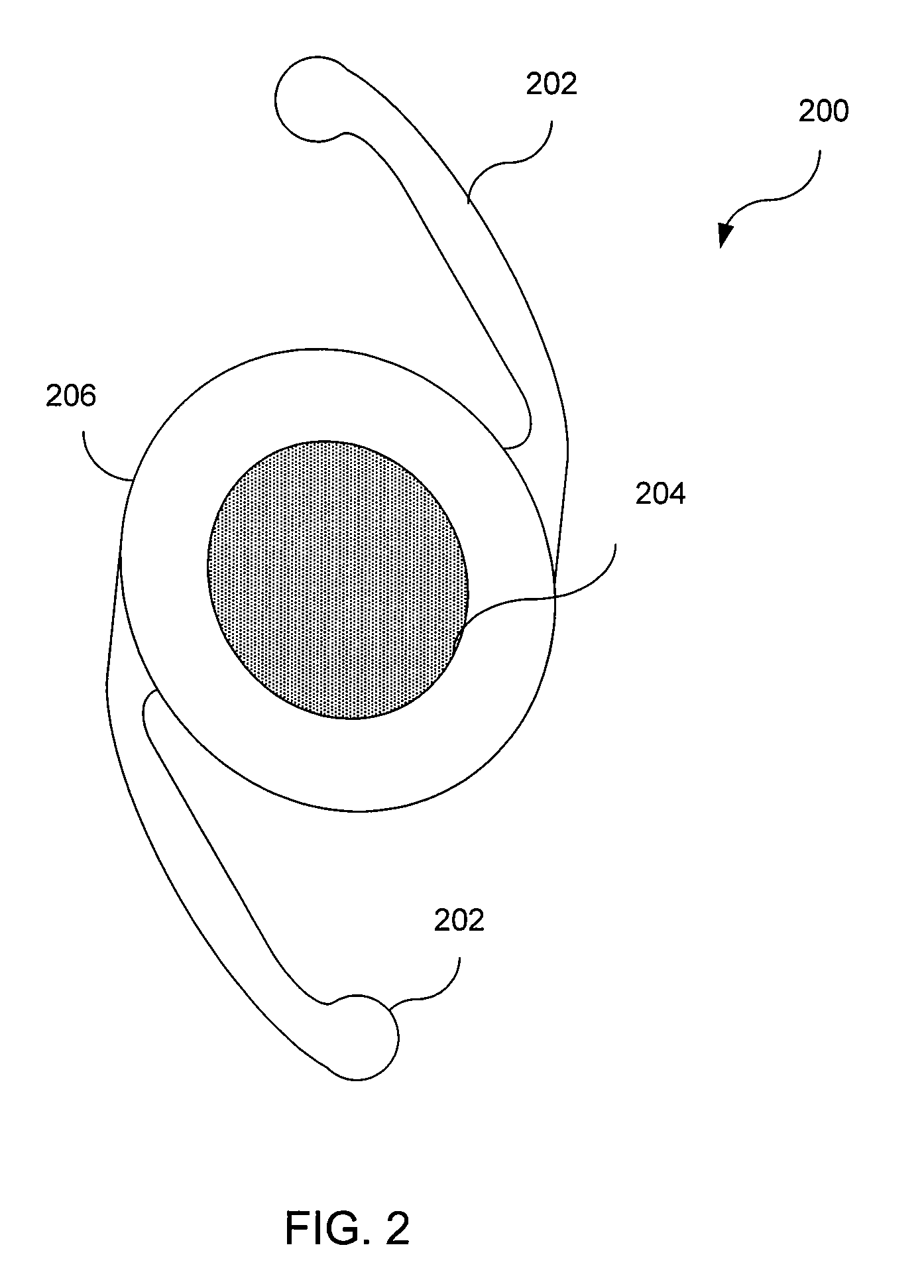Accommodating intraocular lens
a technology for intraocular lenses and lenses, applied in the human eye field, can solve the problems of rigid materials, reduced vision, and reduced light transmission,
- Summary
- Abstract
- Description
- Claims
- Application Information
AI Technical Summary
Benefits of technology
Problems solved by technology
Method used
Image
Examples
Embodiment Construction
[0021]Preferred embodiments of the present invention are illustrated in the FIGs., like numerals being used to refer to like and corresponding parts of the various drawings.
[0022]An improved design for an ocular implant is provided by embodiments of the present invention. This ocular implant includes an accommodating intraocular lens (IOL) and a number of haptics. The accommodating IOL includes a liquid suspended between two optically transparent plates or membranes where the IOL passes optical energy. The haptics mechanically couple to the IOL in order to position and secure the IOL within the eye. The IOL achieves accommodation by using the eye's ciliary muscles to vary the surface curvature of an amount (e.g., a drop) of the liquid. The liquid has a high surface tension and is surrounded by phobic liquid. Pressure from the ciliary muscles causes fluid from a reservoir to be added to or withdrawn from the drop. Increasing / decreasing the size of the drop changes the angle of the su...
PUM
 Login to View More
Login to View More Abstract
Description
Claims
Application Information
 Login to View More
Login to View More - R&D
- Intellectual Property
- Life Sciences
- Materials
- Tech Scout
- Unparalleled Data Quality
- Higher Quality Content
- 60% Fewer Hallucinations
Browse by: Latest US Patents, China's latest patents, Technical Efficacy Thesaurus, Application Domain, Technology Topic, Popular Technical Reports.
© 2025 PatSnap. All rights reserved.Legal|Privacy policy|Modern Slavery Act Transparency Statement|Sitemap|About US| Contact US: help@patsnap.com



